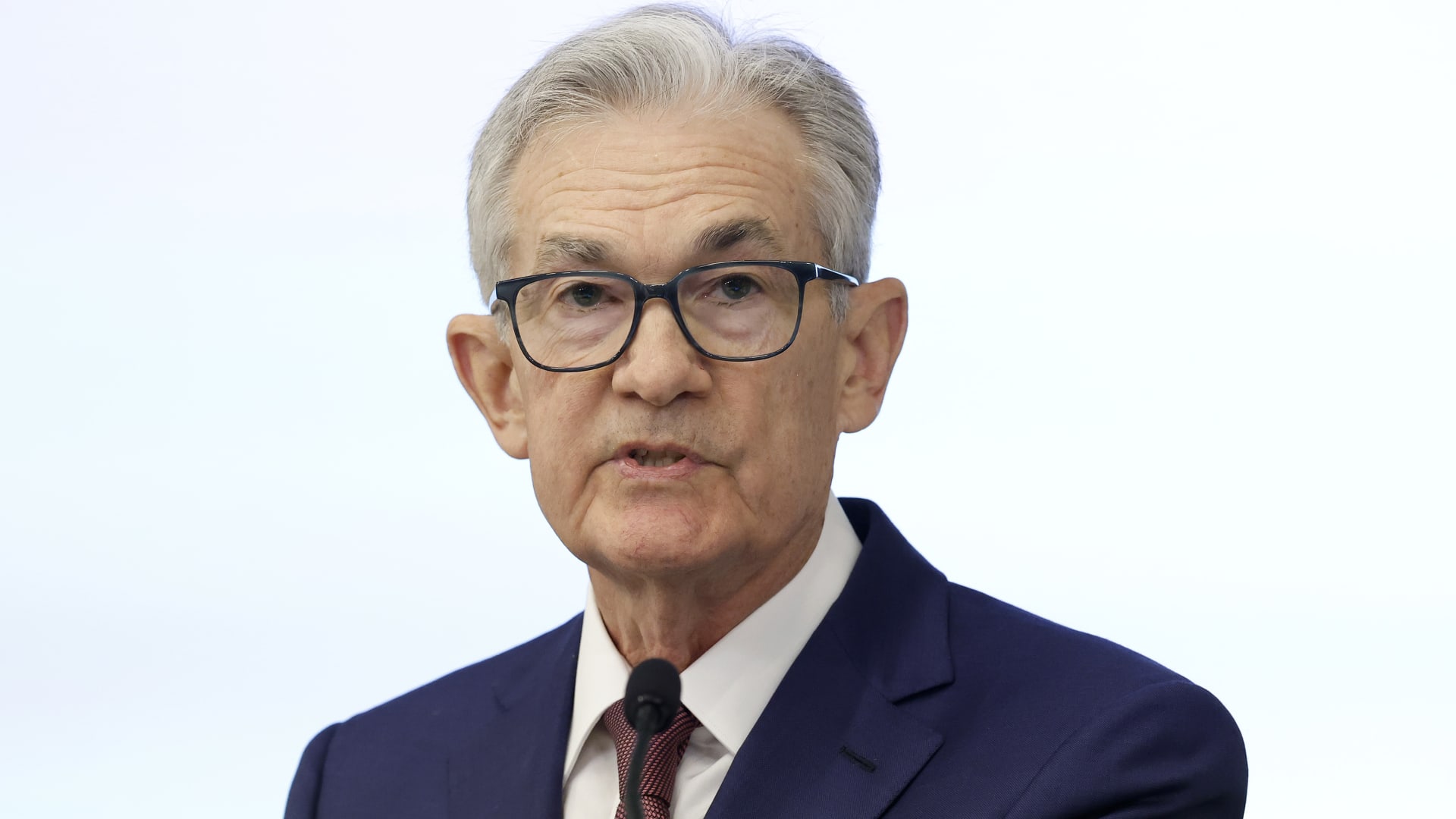Respondents to the CNBC Fed Survey see fewer rate of interest cuts than the market’s aggressive outlook, with the central financial institution beginning them later within the yr than merchants at the moment hope.
Just 9% see the Federal Reserve slicing rates in March. Fifty % see a cut in May and solely in June is there a majority of 70% predicting that rates go down. Futures markets, in the meantime, place a 37% chance on a March cut and round an 84% likelihood in May. And whereas futures markets have priced in between 5 and six fee reductions this yr, survey respondents, on common, see only a bit extra than three.
“There is little motive to count on a serious slowdown within the economic system so the Fed will probably not threat the positive aspects in inflation it has made by easing prematurely,” wrote Joel Naroff, president of Naroff Economics, in response to the survey.
The Fed’s rate of interest resolution is Wednesday at 2 p.m. ET and will be adopted by a information convention by Fed Chief Jerome Powell, the place merchants will parse his phrases for any indication on when the central financial institution might start to transfer.
It’s pretty typical for this group of Fed watchers to be extra carefully aligned with the central financial institution’s outlook than the market. The query stays of who has it proper and how a lot it issues. By 2025, the market, the survey and the Fed forecasts all converge on a funds fee between 3.3% and 3.6%. The debate now could be over how briskly the Fed will get there.
“(Fed Chair Jay) Powell will push again towards the market on what they’re pricing in for cuts however nonetheless lean into just a few,” predicts Peter Boockvar of Bleakley Financial Group. “(It’s a) robust stability as a result of markets hear what they need to hear.”
Economic outlook
While respondents predict a cautious Fed, on stability they assume it needs to be extra aggressive: 56% say the larger threat is that the Fed cuts too late whereas 44% say the danger goes too early.
The 25 respondents, together with economists, strategists and fund managers, had been much less united on the dangers round decreasing the Fed’s $7.6 trillion stability sheet. They count on the discount of the stability sheet — referred to as quantitative tightening — to finish in November. The Fed is seen decreasing its whole reserves by one other $1 trillion to $6.6 trillion and decreasing financial institution reserves to $3 trillion from the present stage of round $3.5 trillion.
At that stage, financial institution reserves could be nearly double the place they had been earlier than the Fed began rising its stability sheet to present extra stimulus to the economic system. The central financial institution has stated it needs to cease QT simply above the extent of what it calls “ample reserves.” Thirty-six % of respondents say the larger threat is that the Fed leaves the stability sheet too massive, in contrast with 16% who say the danger is maintaining the stability sheet too small. But 32% say neither is far of a threat and 12% say each dangers are equal.
The CNBC survey reveals forecasters nonetheless see a slowdown forward, however one not practically as extreme as they misforecast a yr in the past. Last yr, via at the very least the primary half of the yr, respondents predicted development would sluggish beneath 1%, together with rising unemployment. Growth got here in above 3% and unemployment barely budged.
This yr, the common gross home product forecast is for GDP to sluggish to 1.3%, unemployment to rise six-tenths of some extent to 4.3% whereas the headline client worth index ends the yr at 2.7%. But these averages cover a spectrum of views on the outlook.
“With the yield curve inverted since November 2022, main financial indicators down 21 months in a row, and the M2 cash provide declining year-over-year, I simply cannot deliver myself to abandon my recession forecast,” stated Robert Fry, chief economist, Robert Fry Economics LLC. “But it’s changing into obvious that, for numerous causes, the U.S. economic system is way much less interest-sensitive than it used to be.”
But Mark Zandi of Moody’s Analytics writes in, “It is troublesome not to be extra upbeat concerning the economic system’s prospects. And whereas there are draw back threats, together with the potential for numerous geopolitical hotspots to boil over and a contested presidential election, they really feel more and more much less threatening.”
Don’t miss these tales from CNBC PRO:

